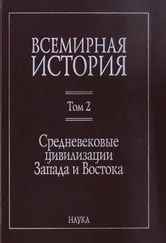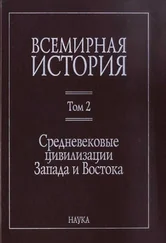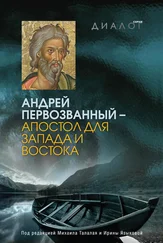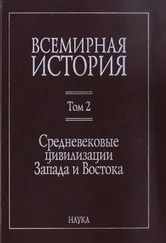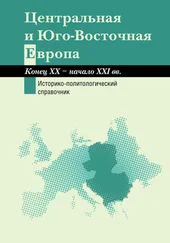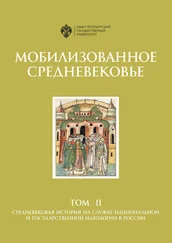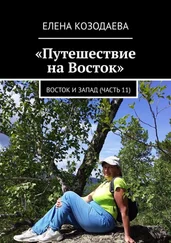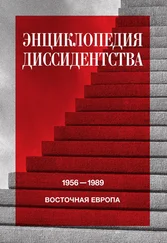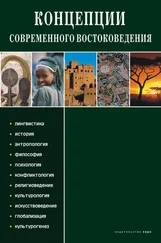Сильвестр. Указ. соч. С. 88–100.
Там же. С. 90–91.
Сильвестр. Послание к князю Александру Борисовичу. С. 94.
См. выше.
Грамота от царя Ивана Васильевича к Исмаилю князю с служилым татарином с Бинсубою Бахтеяровым с товарищи // Продолжение древней рос. вивлиофлики. Ч. 10. Спб., 1795. С. 318.
Плюханова М. Б. Сюжеты и символы Московского царства. СПб., 1995. С. 179.
См.: Les Chretiens et les Juifs dans les sociétés de rites grec et latin = Евреи и христиане в православных обществах Восточной Европы / под ред. М. В. Дмитриева. М., 2011. Параллельно и вне всякой связи с упомянутым проектом эту проблематику разрабатывал шведский ученый А. Пересветов-Мурат, чьи работы обеспечили большой шаг вперед в знаниях о древнерусской антииудейской полемической письменности и образе иудеев в русской средневековой культуре (Pereswetoff-Morath A. A Grin without a Cat. I. «Adversus Iudeaos» Texts in the Literature of Medieval Russia. 988-1504; II. Jews and Christian in Medieval Russia. Lund, 2002. (Lund Slavonic Monographs; 4–5); Idem. «Säg mig jude!». Om judisk-kristna disputationer och andra antijudaistiska texter i rysk medeltidslitteratur (988-1600) //Svantevit. Dansk tidsskrift for Slavistik. 1998. Vol. 19. No. 2. P. 5–24; Idem. «And Was Jerusalem Builded Here…?» On the Textual History of the Slavonic Jerusalem Disputation II Scando-Slavica. 2001. Vol. 47. P. 19–38; Idem. A Shadow of the Good Spell: On Jews and Anti-Judaism in the World and Work of Kirill of Turov // Kirill of Turov. Bishop, Preacher, Hymnographer / ed. by I. Lunde. Bergen, 2000. P. 33–75. (Slavica Bergensia; vol. 2); Idem. «Whereby We Know that It Is the Last Time». Musings on Anti-Messiahs and Antichrists in a Ruthenian Textual Community. Lund, 2006. (Slavica Lundensia Supplementa; vol. 3)).
Контраст между позднесредневековой Византией, Киевской Русью, с одной стороны, и Западом – с другой отмечают, в частности, С. Барон и Д. Клиер. «In the West-European lands – where the Jewish question was subject to much open debate; where churchman after churchman wrote diatribes adversus Judaeos; where Christian preachers often fulminated against their Jewish compatriots, particularly during the Easter period; where princes and city councilors heaped ordinance upon ordinance regulating the ever-shrinking areas of Jewish activity; and where the populace at large believed in the demonic nature of its Jewish neighbors and hurled against them accusation of ritual murder, desecration of the host, and poisoning of wells, if it did not indeed resort to violence, even massacres – there the Jewish problem evidently was an important, sometimes a burning issue. None of this is recorded in the declining Byzantine Empire» (Baron S.W. A Social and Religious History of the Jews: in 18 vol. Vol. 17. N.Y., 1952. P. 41); «A comparison with contemporary Europe is revealing. The murderous frenzy of the Crusades never communicated itself to Kievan Rus'. There was no Russian equivalent to the Western European and Polish charge that the Jews poisoned wells and spread the plague… Russia lacked the popular identification of the Jews with the Devil, which became a significant cultural phenomenon in the West. There were no Russian equivalents of the anti-Jewish stereotypes which appeared in the medieval miracle plays, or in Church art and architecture. Despite the recurrent Byzantinist theme of the opposition of the Old and New Testament, Russian churches did not carry the Western motifs of „Ecclesia“ and „Synagoga“ common in medieval cathedrals in the West» (Klier J.D. Russia Gathers Her Jews: The Origins of the «Jewish question» in Russia. DeKalb, 1986. P. 24).
Понятие «химерического» антисемитизма введено Г. Лангмуиром, чтобы обозначить специфические средневековые формы антиеврейских представлений (Langmuir G.I. History, Religion andAntisemitism. Berkeley, 1990; Idem. Toward a Definition of Antisemitism. Berkeley, 1990).
См., в частности: Шпирт A.M. Проблема терпимости к евреям в украинской православной публицистике перед восстанием Б. Хмельницкого 1648 г. // Материалы XII Ежегод. междунар. междисциплинар. конф. по иудаике. Вып. 18. Ч. 2. М., 2005. С. 101–116. (Акад. сер.); Серов Б. Н. Представления о евреях и иудаизме в украинско-белорусской проповеди и полемике XVI в. // Иван Александрович Воронков – профессор-славист Московского университета: материалы науч. чтений / отв. ред. Г. Ф. Матвеев. М., 2001. С. 58–85.
[Галятовский И.]. Месиа правдивый, Исус Христос, Сын Божий, от початку света через все веки людем от Бога обецанный и от людей очекиванный. Киев, 1669. О новшествах, привнесенных И. Галятовским в антииудейские дискурсы восточнославянских православных культур, см.: Шпирт A.M. «Мессия Правдивый» Иоанникия Галятовского и его «еврейские» источники // Славяноведение. 2008. № 4. С. 37–45; Серов Б. Н. Образ евреев в сочинении И. Галятовского «Мессия правдивый» // Еврей, культура и культур, контакты: материалы VI Ежегод. междунар. междисциплинар. конф. по иудаике. Ч. 3. М., 1999. С. 100–114. Этой же теме посвящена глава в диссертации A.M. Шпирта (Этноконфессиональные отношения на восточных землях Речи Посполитой в середине XVII в. (еврейско-христианские отношения): автореф. дис…. канд. ист. наук. М., 2009).
Настоящий раздел работы опирается на результаты исследований, отраженные прежде в двух статьях: Dmitriev Μ. Culture «latine» et culture «orthodoxe» ä lest de l'Europe au XVII emesiecle // XVII emesiecle. 55 an. 2003. No. 3. Numero special: «La frontiere entre les chrétientés grecque et latine au XVII emesiecle. De la Lithuanie ä l'Ukraine subcarpathique». P. 391–414; ídem, bacina jako medium wplywów zachodnich w kulturach wschodnioslowianskich XVI i XVII wieku // Lacina jako jezyk elit / pod red. J. Axera. Warszawa, 2004. S. 343–373.
Читать дальше
Конец ознакомительного отрывка
Купить книгу

